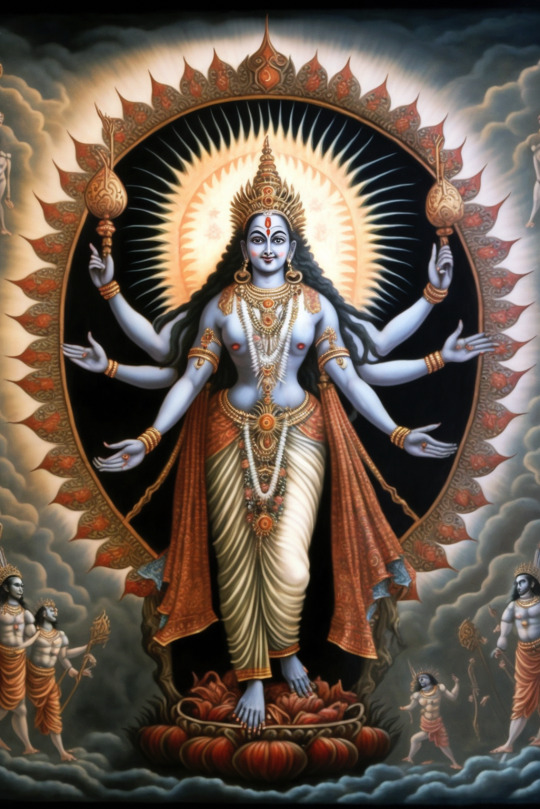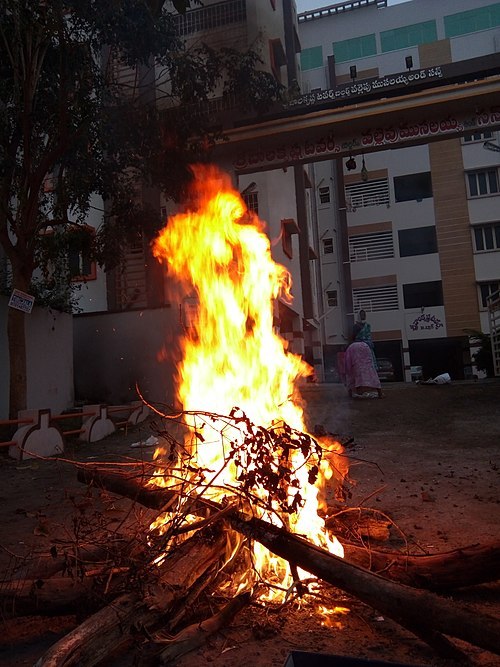#dakshinayana
Explore tagged Tumblr posts
Text


Parivartini Ekadashi 2023 Lord Vishnu ॐ Talon Abraxas ‘Om Shreem Hreem Kleem Glaun Devkisut Govind Vasudev Jagatpate Dehi Me Tanyam Krishna Tvamaham Sharanam Gatah’. ✨Parivartini Ekadashi falls on the 11th day of the Bhadrapada month in the Hindu calendar. It's believed that Lord Vishnu changes his sleeping position on this day, signifying a cosmic shift. This Ekadashi is important during the 'Dakshinayana Punyakalam' and 'Chaturmas' period. Devotees worship Lord Vishnu, fast, and seek blessings and spiritual merits. Observing this sacred Vrata is thought to bring happiness, prosperity, and good health, with merits seen as more valuable than in ordinary months.✨
45 notes
·
View notes
Link
#AsokeMukherji#culturalheritage#GlobalUnity#Health#India#InternationalDayofYoga#MentalHealth#Mindfulness#NarendraModi#Nature#NewDelhi#Paris#PhysicalHealth#PrimeMinisterNarendraModi#UnitedNations#Voting#Wellness#Yoga
0 notes
Text
Rutusandhikaal and Dakshinayana - Find out how Ayurveda's Rutusandhikaal and Dakshinayana guidelines can help you stay healthy and balanced during the changing seasons. Get diet and lifestyle tips for the monsoon season, and more. Read More- https://www.naditarangini.com/rutusandhikaal-and-dakshinayana/
0 notes
Text
On this day in Wikipedia: Saturday, 13th January
Welcome, karibu, benvingut, ողջու՜յն (voġčuyn) 🤗 What does @Wikipedia say about 13th January through the years 🏛️📜🗓️?

13th January 2021 🗓️ : Event - President of the United States Outgoing U.S. President Donald Trump is impeached for a second time on a charge of incitement of insurrection following the January 6 United States Capitol attack one week prior. "The president of the United States (POTUS) is the head of state and head of government of the United States of America. The president directs the executive branch of the federal government and is the commander-in-chief of the United States Armed Forces. The power of the presidency has grown..."

Image licensed under CC BY-SA 3.0? by Zscout370 at English Wikipedia
13th January 2019 🗓️ : Death - Phil Masinga Phil Masinga, South African footballer (b. 1969) "Philemon Raul Masinga (28 June 1969 – 13 January 2019) was a South African professional footballer and manager who played as a striker from 1990 to 2002. He was born in Khuma in the city of Matlosana formerly known as Klerksdorp Municipality.He played in the English Premier League for Leeds United,..."
13th January 2014 🗓️ : Death - Bobby Collins (footballer) Bobby Collins, Scottish footballer and manager (b. 1931) "Robert Young Collins (16 February 1931 – 13 January 2014) was a Scotland international football player, best known for his successful spells at Celtic, Everton and Leeds United...."
13th January 1974 🗓️ : Birth - Sergei Brylin Sergei Brylin, Russian ice hockey player and coach "Sergei Vladimirovich Brylin (Russian: Серге́й Влади́мирович Бры́лин; born January 13, 1974) is a Russian professional ice hockey coach and former player who is an assistant coach for the New Jersey Devils of the National Hockey League (NHL). Brylin played with the Devils from 1995 to 2008 and is a..."

Image licensed under CC BY-SA 2.0? by Lisa Gansky from New York, NY, USA
13th January 1924 🗓️ : Birth - Paul Feyerabend Paul Feyerabend, Austrian-Swiss philosopher and academic (d. 1994) "Paul Karl Feyerabend (German: [ˈfaɪɐˌʔaːbm̩t]; January 13, 1924 – February 11, 1994) was an Austrian philosopher best known for his work in the philosophy of science. He started his academic career as lecturer in the philosophy of science at the University of Bristol (1955–1958); afterwards, he..."

Image by Grazia Borrini-Feyerabend
13th January 1822 🗓️ : Event - Flag of Greece The design of the Greek flag is adopted by the First National Assembly at Epidaurus. "The national flag of Greece, popularly referred to as the "turquoise and white one" (Greek: Γαλανόλευκη, Galanólefki) or the "azure and white" (Κυανόλευκη, Kyanólefki), is officially recognised by Greece as one of its national symbols and has 5 equal horizontal stripes of blue alternating with..."

Image by (of code) -xfi- (talk)
13th January 🗓️ : Holiday - Sidereal winter solstice's eve celebrations in South and Southeast Asian cultures; the last day of the six-month Dakshinayana period (see January 14): Bhogi (Andhra Pradesh, Tamil Nadu) "Bhogi (Kannada: ಭೋಗಿ,Telugu: భోగి,Tamil: போகி) is the first day of the four-day Pongal festival. It falls on last day of Agrahāyaṇa or Mārgaśīrṣa month of Hindu Solar Calendar, which is 13 January by the Gregorian calendar. It is the day before Makar Sankranti, celebrated widely in Andhra Pradesh,..."

Image licensed under CC BY-SA 4.0? by K.S.S.Rohith
0 notes
Text
The period of Dakshinayana & the SuryaNarayana Temple Bangalore ©Sangeeta Venkatesh
While writing is my first love, I have also embarked on making some videos on YouTube. This video is about the Sun’s transit southwards from Cancer to Capricorn and is known as the Dakshinayana period, which also describes the Sun Temple in Bangalore. Do subscribe, share & look forward to your interactions on that forum […]The period of Dakshinayana & the SuryaNarayana Temple Bangalore…
View On WordPress
0 notes
Video
youtube
దక్షిణాయన ప్రారంభ విశేషం | Sri Gopi Sarma Sidhanthi | Dakshinayana Prara...
0 notes
Text
Mahalaya,Pitru Paksha Tharpan Explained
Mahalaya,Pitru Paksha Tharpan Explained
What is Mahalaya, Pitru Pakshs The period between New Moon and Full Moon in Simha Maasa (approximately in September)for 15 days is named as Mahalaya Paksha. Lunar Calendar of Hindus divides a month with reference to the waxing and waning of the Moon,into two.(for details on Hindu/Indian Calculation of Time’ please read my Blog’TIME-Non-Linear Theory,filed in Astrophysics). The waxing period is…

View On WordPress
#பித்ரு பக்ஷ தர்ப்பணம்#பித்ரு பக்ஷம்#மகாளய பக்ஷ தர்ப்பணம்#மகாளய பக்ஷம்#Dakshinayana#Maha Bharani#Mahalaya Paksha#Pitru Paksha#Sraddha Mahalaya Paksha#Tharpana
0 notes
Text
Karka Sankranti On 16 July 2021

Karka Sankranti marks emerging of celestial event involving Sun transiting into Cancer sign. Besides, the event also marks the ending of Uttarayana period that continues for six months, as per Hindu calender.
#KarkaSankranti#Sankranti#KarkaSankranti2021#Festival#Sun#Dakshinayana#SunInCancer#LordSurya#SuryaGrah#SuryaSankranti#Surya#AstrologerUmesh
0 notes
Text
Auspicious and Inauspicious Time of Death
Auspicious and Inauspicious Time of Death
Significance of Surya Devata in the Shastras | Yaksha Prashnam-16 The Yaksha puts forth the next question to King Yudhishthira. He asks: “Who is the one who moves around unhindered even when nothing existed in the world?” To this Dharma Putra answers “He is the Sun god indeed.” Symbolic Meaning of Sunrise Now, even this answer requires deeper deliberation. One definition of Surya (Sun god) is…

View On WordPress
#Auspicious time of death#Dakshinayana#Gods and Goddesses#Inauspicious time of death#Surya Devata stories#Uttarayana
0 notes
Text
Ketu & Rahu and Time
In Vedic Astrology, the Vimshottari dasha system has been developed, which allows you to determine when the energies of the planets will manifest in a person’s life. Ketu and Rahu also have their own place in this system. The main period of Rahu lasts 18 years. It is believed that he can bring a very big take-off in his period if he is well-located, but if a person is strongly attached to acquisitions and is very proud of it, then at the end of the period Rahu can take everything. Rahu is the planet of illusion and intoxication, and in case of defeat in their periods and sub-periods, a person may meet with deceit or with a strong desire for forbidden foods and deeds.
Each planet governs a specific season of the year. Rahu along with Saturn governs the peak of Winter and falls between December and February in the Northern Hemisphere.
Vedic Astrology divides the year into 2 parts Uttarayana (Northern path of the Sun from Capricorn to Gemini - from December 22 to June 21) and Dakshinayan (South path of the Sun from Cancer to Sagittarius - from June 21 to December 22). It is believed that demigods and divine qualities are strongest during the Solar Northern Path, while demons and demonic qualities are strongest during the Solar Southern Path. Thus Rahu, like other malefics, is more powerful during Dakshinayana.
During the month, Rahu is most powerful on the days when the Moon passes the nakshatras ruled by Rahu - Ardra (Gemini), Swati (Libra), and Shatabhisha (Aquarius).
The month between two full moons is divided into 30 tithi or lunar days. These 30 days are divided among themselves into 15 days of the growing and 15 days of the waning moon. It is believed that Rahu correlates with the 8 lunar days of the waxing and waning moon, but some astrologers write that the 5 lunar day also belongs to him, because. it is on these tithes that snake worship takes place.
The days of the week associated with Rahu are Wednesday and Saturday, as Rahu is friendly to Mercury and Saturn.
During the day, the energies of Rahu are strongest during sunset and for 2 hours after it. Also, the energies of Rahu are strong at night. People born at this time often feel the influence of Rahu most strongly in their lives.
In people who are strongly influenced by Rahu, intuition and creativity are greatly aggravated at night.
Also during each day, there is a time of Rahu or Rahu-kalam in which the influence of the node is very strong. This time is considered unfavorable for important conversations or the beginning of the business since Rahu misleads the mind of a person and makes him unable to adequately perceive the surrounding reality.
Age from 42 to 47 years is attributed to Rahu. At this time, Rahu manifests in its entirety. At this time, many things change in people's lives, what exactly will change depends on the position of Rahu in the person's horoscope. Starting from the age of 69, Saturn, Rahu, and Ketu increase their influence on a person.
Also, important years are the time when Rahu and Ketu transit through their position in the natal chart at the time of birth. This happens once every 18 years. And therefore, the periods from 18-19, 37-38, 56-57, and 75-76 years are very important for a person. At this time, internal transformations take place, and consciousness changes.
#Rahu#ramayana#liberation#chakras#libra#ramayan#rahu ketu#vedas#vedic astrology#Vedic Jyotish Online#vedic astro observations#astrology numerology vedicastrology#vedicknowledge#vedic astro notes#vedanta#hindu vedic#mythology#hindu mythology#classical mythology#indian mythology#planets#astrology#vastu#vastu shastra expert#vaastu#astro notes#predictive astrology#aries astrology#astro posts#astro observations
26 notes
·
View notes
Text
அருள்மிகு அண்ணாமலையார் திருக்கோயில் 10.07.2022 தட்சிணாயன புண்யகால உற்சவம் மூன்றாம் நாள் காலை மற்றும் இரவு சந்திரசேகரர் புறப்பாடு. Arunchaleswarar temple 10.7.22 Dakshinayana punyakaala festival. Lord Chandrasekharar departure for inspection rounds




4 notes
·
View notes
Photo

Tulasi Shalagrama Vivaha (marriage) This is the celebration of the marriage ceremony of Shrimati Tulsi Devi and Lord Shri Krishna. https://youtu.be/-51Pjo7v76o #srimadbhagavatam #vishnu #vishnupuran #harekrishna #harekrsna #harekrishna #harekrisna #prabhupada #bhagavadgita #bhagavadgitaasitis #bhagavadgītā #srilaprabhupada #srilaprabhupad #srilaprabhupadaquotes #asitis #india #indian #wayoflife #religion #goals #goaloflife #spiritual #bhakti #bhaktiyoga #chant #prasadam #picoftheday #photo #beautiful #india #usa https://sites.google.com/view/sanatan-dharma https://m.facebook.com/HDG.A.C.Bhaktivedanta.Svami.Srila.Prabhupada.Uvaca/ The Sankalpa mantra starting the 19th November 2021 on Purnima -Adhya Brahmana, (from the year of Lord Brahma's birth) -Dvitiya-parardhe, (in the 2nd half, 51st year) -Sri-Svetha-Varaha-Kalpe, (in the Sveta-Varaha kalpa) -Vaivasvatha-manvantare, (in the reigning period of the current Manu Vaivasvatha, 7th Manu period) -Ashta vimsati tame, (in the 28th maha-yuga of the manvantara) -Kaliyuge, prathame pade (in the first quarter of this kali-yuga) -Jambudvipe, (in Jambudvipa) -Bharata varshe, (the southernmost tract of land) -Bharata khande, (9th part of Bharatavarsha - earth) -Sakabde Meroh dakshine parsve, (South of Meru) -Asmin vartamane vyavaharike, (in the current period now reigning) -Prabhavadi shashti samvatsaranam madhye, (among 60 years cycle starting from Prabhava) -Plava nama samvatsare, (Plava-April 13, 2021 to April 1, 2022) -Uttarayana, (January 15 to July 16) Dakshinayana, (July 17 to January 14) -Hemanta rithou (Winter season) *Kartika (lunar month) - Damodara (lunar month in Gaudiya Vaisnavism) *Vrschika (solar month) - Nov-Dec in trop and Oct-Nov in west months -535 Gaurabda -Gaura Pakshe, (light fortnight) *Purnima: 19 November 2021 (sunrise 05:53), (sunset 16:50), (moonrise 16:52), (moonset 05:38) -Sukravara, friday, 19 November 2021) -Purnima subha thithou (Purnima - 15th tithi) -Krittika nakshathra yukthayam https://www.instagram.com/p/CWdECl4gKKy/?utm_medium=tumblr
#srimadbhagavatam#vishnu#vishnupuran#harekrishna#harekrsna#harekrisna#prabhupada#bhagavadgita#bhagavadgitaasitis#bhagavadgītā#srilaprabhupada#srilaprabhupad#srilaprabhupadaquotes#asitis#india#indian#wayoflife#religion#goals#goaloflife#spiritual#bhakti#bhaktiyoga#chant#prasadam#picoftheday#photo#beautiful#usa
2 notes
·
View notes
Text
Dhanurmasa - When the Gods Sleep.
Dhanurmasa – When the Gods Sleep.
Dhanurmasa,
I remember papa referring to it. I never really paid much attention, but this time round I thought let me actually see what this is all about.
From what I understand Dhanurmasa is when the sun enters the zodiac sing of Sagittarius. It has been relevant since Mahabharata. It is believed that that war of Mahabharata was fought then.
this marks the last lapse of the journey of the sun…
View On WordPress
#adityapurana#agneyapurna#Bhaskar jyotisya shashtra#dakshinayana#dhanurmasa#huggi#lakshmi dwadashanamavali#matsyapurana#pongal#rhythm indian#shoonyamasa#udupi
0 notes
Text

Advance Makar Sankranthi wishes to all:
Happy Pongal.
Almost all indian festivals commence according to the positing of planets especially Sun and the Moon. The astrological data as per Almanc-Panchang is the base for all major festivals in India. All that carries astrological informations and almanac.
According to Puranas, on the day of Makara Sankranthi, the Sun pays visit to the house of his son Shani (Saturn) who is the swami of Makar Rashi (Capricorn Zodiac sign).
Makara Sankranti is the day when the Sun begins its movement away from the Tropic of Capricorn and towards the northern hemisphere and this period from Makara Sankranthi to Karka Sankranthi is known as uttarayan (northward revolution).
To Hindus, the Sun stands for knowledge, spiritual light and wisdom. Makara Sankranti signifies that we should turn away from the darkness of delusion in which we live, and begin to enjoy a new life with bright light within us to shine brighter and brighter. We should gradually begin to grow in purity, wisdom and knowledge even as the Sun does from the Day of Makara Sankranti.
Winter Solstice
Makar Sankranti has an astrological significance, as the sun enters the Capricorn (Sanskrit: Makara) zodiac constellation on that day. This date remains almost constant with respect to the Gregorian calendar. However, precession of the earth's axis (called ayanamsa) causes Makara Sankranti to slide further over the ages. A thousand years ago, Makara Sankranti was on 31 December and is now on 14 January. Five thousand years later, it shall be by the end of February, while in 9,000 years it shall come in June.[citation needed]. According to calculations, from 2050 Makar Sankranti will fall on January 15.
Makara Sankranti is a major harvest festival celebrated in various parts of India. Many Indians also conflate this festival with the Winter Solstice, and believe that the sun ends its southward journey (Sanskrit: Dakshinayana) at the Tropic of Capricorn, and starts moving northward (Sanskrit: Uttarayaana) towards the Tropic of Cancer, in the month of Pausha on this day in mid-January. There is no observance of Winter Solstice in the Hindu religion. Makara Sankranti commemorates the beginning of the harvest season and cessation of the northeast monsoon in South India. The movement of the Sun from one zodiac sign into another is called Sankranti and as the Sun moves into the Capricorn zodiac known as Makara in Sanskrit, this occasion is named as Makara Sankranti in the Indian context. It is one of the few Hindu Indian festivals which are celebrated on a fixed date i.e. 14 January every year (or may be sometimes on 15 January (leap year)).
Makara Sankranti, apart from a harvest festival is also regarded as the beginning of an auspicious phase in Indian culture. It is said as the 'holy phase of transition'. It marks the end of an inauspicious phase which according to the Hindu calendar begins around mid-December. It is believed that any auspicious and sacred ritual can be sanctified in any Hindu family, this day onwards. Scientifically, this day marks the beginning of warmer and longer days compared to the nights. In other words, Sankranti marks the termination of winter season and beginning of a new harvest or spring season.
Pongal or Sankranti is celebrated all over South Asia with some regional variations. It is known by different names and celebrated with different customs in different parts of the country.
In India it is known by different regional names.
Pongal: Tamil Nadu
Makar Sankranti: Bihar, Andhra Pradesh,Chhattisgarh, Goa, Haryana, Jharkhand, Karnataka, Kerala, Madhya Pradesh, Maharashtra, Manipur, Odisha, Rajasthan, Sikkim, Uttar Pradesh, Uttarakhand , West Bengal and rajasthan
Uttarayan: Gujarat
Maghi: Haryana, Himachal Pradesh and Punjab
Lohri: Punjab
Bhogali Bihu: Assam
Shishur Saenkraat: Kashmir Valley
Khichdi: Uttar Pradesh and western Bihar
Makara Sankramana: Karnataka
Makara Sankramanam: Andhra Pradesh
How to Celebrate:
1. Get up early in the morning, before sunrise, have bath and be ready with water & flowers for the sunrise. Worship the rising Sun, by offering water, flowers with both the hands & then pray with folded hands by chanting the Gayatri Mantra and pray for knowledge, wisdom and enlightenment to rise in the similar way to greater & greater heights. Pray for blessings to live a dynamic, inspired & righteous life.
2. Do tarpan for your ancestors. Offer water to the ancestors while praying for their blessings. Resolve to redeem the pledges & pride of your forefathers. Live life in such a way that wherever your forefathers may be their head is held high by the life & deeds of their children.
3. Have a special session of Meditation, wherein you bring about the awareness of the self-effulgent subjective divinity. Affirm the greatest importance of your spiritual goal very clearly, and pray to God to bless you with the capacity to constantly revel in your true self. May the graph of your rise like the Uttarayana Sun. May there be greater 'Love & Light' in your life & the world.
7 notes
·
View notes
Text
Your Ayurveda Guide to Combat Winter

The world gradually falls into a condition of dormant slumber as a coating of frost covers it. All activity and energy slow to a quiet lull as a cozy layer of snow cover the entire planet. It's time to pull back and save your resources for the upcoming season.
You focus all of your external energy during the winter and enter a condition of rest, reflection, and hibernation. You can replenish your energy for the upcoming year by recovering it throughout the cold season.
Ayurveda and Seasons
It's crucial to maintain perfect harmony with nature if you want to lead a healthy and balanced existence. The natural cycle of the seasons can be maintained by altering your diet and manner of living. Your immune system, digestion, and vitality will all be improved once you have a better understanding of your intrinsic nature and attributes and how they fluctuate with the seasons.
According to Ayurveda, becoming more aware of nature also aids in becoming more aware of your own constitution, or prakruti, which is made up of the three energies, or doshas, Vata, Pitta, and Kapha. Pitta is the energy of digestion; Kapha is the energy of stability. The same components found in nature—Earth, Fire, Water, Air, and Ether—are combined to form these energies. Your body and mind both contain these elements, which are made up of many attributes.
The Ritucharya concept of seasonal life was established by Ayurveda. The season is referred to as Ritu and the regimen as Charya. By adhering to these routines and Ayurveda practices, you may prevent any changes in the body's homeostasis and help your body and mind adjust to the changing seasons. According to Ayurveda, the sun's movement determines the two Ayanas that make up the year. There are two Ayanas, each with three seasons: Uttarayana, or the northern solstice, and Dakshinayana, or the southern solstice. As a result, whereas Varsha (monsoon), Sharata (autumn), and Hemanta (late autumn) fall in Dakshinayana, Shishira (winter), Vasanta (spring), and Grishma (summer) do not. Different components and energies are present in each season, and when these are out of balance, diseases and illnesses result.
Winter Season in Ayurveda
Winter weather is frigid and freezing with a lot of humidity. Lethargy is another characteristic of the winter season when both animals and people typically hibernate. Winter is typically considered to be a Kapha season since these characteristics typically characterize the Kapha dosha. The body and mind are given power and stability when the Kapha dosha is in equilibrium. However, the Vata dosha might occasionally manifest throughout the winter as a chilly and dry spell. Vata dosha needs to be balanced if you don't want to feel lonely and unhappy.
How to improve immunity in the winter season
Since many people believe that winter is an infectious disease season, they generally dislike it. Therefore, it's generally accepted that winter significantly lowers your immunity. Ayurveda, on the other hand, holds a different opinion and considers the winter a time to build up your defences. Ancient science explains how to strengthen your immune system and stay healthy during the winter.
Bala, which in Ayurveda means immunity, also refers to psychological and spiritual immunity in addition to bodily immunity. Bala aids in giving the body and mind the stamina needed to combat any issues that may impair the body's various immune systems. Your immunity is impacted by a number of variables, including diet, lifestyle, season, and age. Through any ups and downs in your life, you can keep your immunity at a constant level.
Many individuals mistakenly believe that winter's inability to digest food makes it poor for immunity. That's not the case, though. This is due to the fact that as appetite grows, people often eat more junk food, which lowers immunity. Increasing your intake of Ayurvedic winter foods can help to strengthen immunity rather than impair it. You can energize your body and mind by selecting these Ayurvedic meals that enhance immunity. Your lifestyle also has a significant impact on how well your immunity holds up during the season.
Here is a comprehensive list of the best Ayurvedic winter foods in case you're unsure what to eat during the colder months:
Artichokes
Avocados
Beets
Brussel sprouts
Carrots
Chillies
Corn
Eggplant (cooked)
Ginger and garlic
Onions
Mashed potatoes
Pumpkins
Tomatoes
Turnips
Cooked apples
Apricots
Bananas
Blueberries
Watermelon
Cherries
Coconut
Dates
Figs
Grapes
Guava
Lemon
Mangoes
Oranges
Papayas
Peaches
Pineapple
Pears
Conclusion
Living in balance and preserving appropriate levels of Vata and Kapha require synchronizing your rhythms with those of nature. You can accomplish this by making crucial dietary and lifestyle changes. The vigor and positivity of your being are greatly enhanced by having a customized regimen. In the end, the main aim of Ayurveda is to help you live a conscious and healthy life by synchronizing your body and mind with nature's cycle.
#Best Ayurvedic Clinic in Delhi NCR#Best Ayurvedic Clinic in Ghaziabad#Ayurvedic treatment center in Delhi NCR
0 notes
Photo

Season's Greetings #Sankranti, #Lohri, #Bihu, #Uttarayan, #Pongal—all celebrations of the harvest. Across the globe these festivals are held with pride and reverence for their cultural significance. Sankranti marks the start of a new solar year in India, when winter turns to spring and brings with it hope and joy. Crowds gather in brightly coloured clothes to exchange sweets while they fly kites high into the sky. Fireworks sparkle like stars as families and friends come together to celebrate the bountiful harvest that has been gathered over the past year. Lohri is celebrated with much enthusiasm in North India. People gather around a bonfire in the dark night while they sing and dance to traditional folk songs and share stories of love and friendship. Special dishes are cooked such as gur rewari and til laddus are distributed amongst friends and family. The celebration goes on till late in the night after which everyone retires along with their loved ones for a good night’s sleep. Bihu is celebrated three times a year across Assam to mark different phases of farming—the sowing season, harvesting season or fertility season. People dress up in vibrant traditional garments as they partake in cultural activities such as bullfights, boat races and meji bihu dances where men perform vigorous movements to drum beats wearing masks made from clay or paper mache. Uttarayan is another harvest festival celebrated mainly in Gujarat by flying kites amidst great fanfare during Makar Sankranti—the day when sun moves from Dakshinayana to Uttarayana across India's sky charting its path towards northward journey every year at this time This occasion also marks an auspicious time to initiate big projects or any other business venture since it’s believed that whatever you begin on this day will be successful throughout that year. Pongal is celebrated mainly in South India as people give thanks for the plentiful harvest that has been collected over the past year. This four-day festival consists of various customs such as family members gathering around a fire on which sweetened rice is boiled until it boils over—depicting abundance for them over the coming months ahead. (at ecoplanetfarm) https://www.instagram.com/p/CnYlgvZjHPW/?igshid=NGJjMDIxMWI=
1 note
·
View note